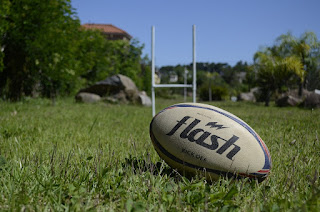A rugby ball has a distinctive shape that sets it apart from other sports balls. It is an elongated oval shape, often described as an "ellipsoidal" or "prolate spheroid" shape. The unique shape of the rugby ball is specifically designed to facilitate the various skills and techniques used in the sport.
The rugby ball is elongated and tapers towards the ends, creating a narrower shape compared to a traditional sphere. This shape allows players to grip the ball firmly and provides better control during passing, catching, and kicking. The narrow ends of the ball allow players to get a good grip, especially when executing kicks or lineout throws.
The length of a rugby ball typically ranges between 280 to 300 millimeters (11 to 11.8 inches), and the circumference is approximately 740 to 770 millimeters (29.1 to 30.3 inches) at its widest point. The shape is designed to be aerodynamic, allowing it to travel through the air with stability and accuracy.
The construction of a rugby ball includes an outer casing made of leather or synthetic materials, which provides durability and grip. The inner bladder, usually made of latex or butyl, is inflated to the required pressure to give the ball its shape and bounce.
The shape of the rugby ball has evolved over time. Early rugby balls were rounder and resembled a more traditional ball shape, similar to that of a football (soccer ball). However, as the sport developed, the elongated shape became favored due to its practicality and handling advantages.
The unique shape of the rugby ball is integral to the sport, allowing players to execute different techniques such as passing, kicking, and handling with precision and control. It is an iconic symbol of the game, instantly recognizable to rugby enthusiasts around the world.
Photo: Pixaby (free)

No comments:
Post a Comment
Thanks for your comment.